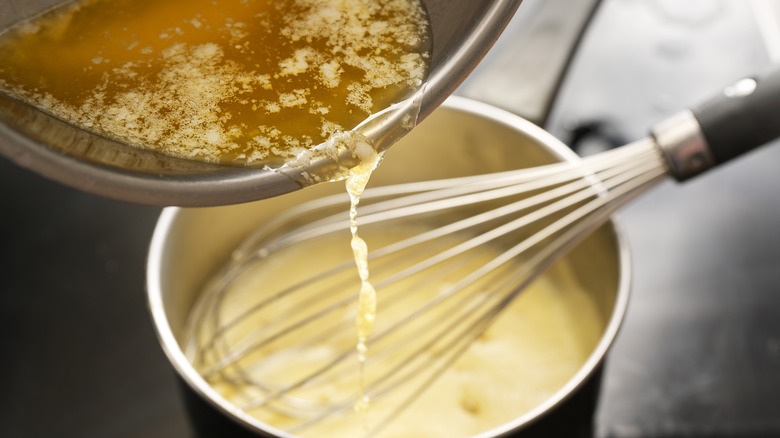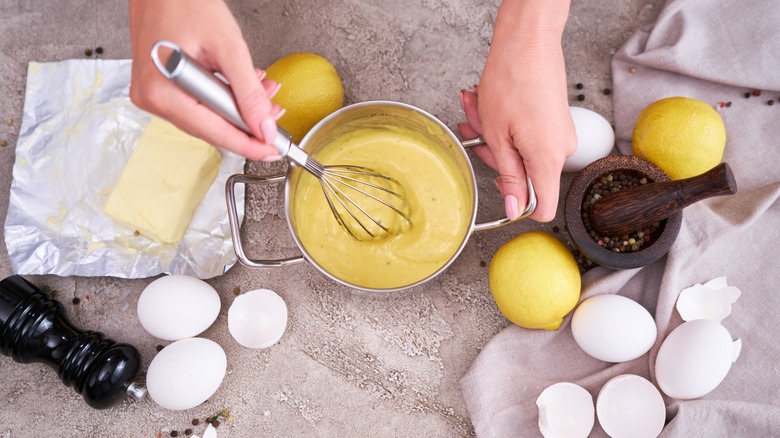What Happens If Your Butter Is Too Hot When Making Hollandaise Sauce?
Hollandaise sauce is the darling of brunch-goers — most of us love this lightly lemony, buttery sauce that smoothly drips over eggs Benedict, adorns poached salmon, and elevates steamed vegetables of all kinds. The sauce has a very short list of ingredients and a technique that is not hard to master once you know a few tricks of the saucier's trade. One of the most important is this: Never allow the sauce to get too hot while you are making it.
Butter is one of the main ingredients in hollandaise sauce. One legend says that the name refers to the high-quality butter produced in Holland, so paying close attention to that delicious dairy product seems only right when making the sauce. If the butter used in making hollandaise gets too hot, the oil in the butter will separate, breaking the smooth texture of the sauce and causing oily pools. Very hot melted butter could even begin to scramble the eggy sauce.
Keeping it cool
We have a classic hollandaise sauce recipe you can try, with plenty of tips to make your brunch a success. First, melt the butter and allow it to cool to nearly room temperature while you prepare the egg mixture. In our recipe, Tasting Table's Jennine Rye recommends whisking egg yolks with lemon juice by hand, as does Mary Berry. When the eggs have doubled in volume, they go over a simmering water bath to cook them slightly, and when thickened, they're removed from the heat before whisking in the melted butter.
These tips should prevent your sauce from getting overheated, but if you should notice droplets of butter pooling on the sauce — the first sign of breaking — simply whisk a little harder to cool it or add a tablespoon of cold milk or heavy cream. And if everything has got too hot, simply place the bowl over an ice bath and whisk as fast as you can until the sauce is smooth again. A critical point to remember is not to leave your prepared hollandaise on the burner while waiting to serve it, as this could lead to the butter overheating, too. Instead, consider using a pre-warmed insulated cup. This nifty trick ensures that your sauce remains as smooth and shiny as it was the moment you stopped whisking, guaranteeing a picture-perfect plate and a premium taste.

